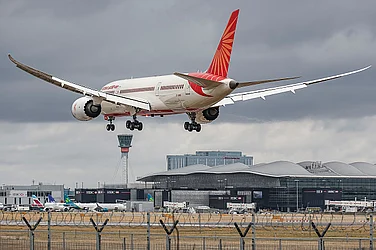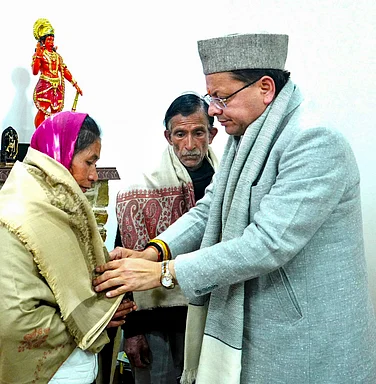AT home with both man-made and natural calamities, Bhiwandi, a township less than 50 km off Bombay, is rapidly developing the reputation of a killing field. Close on the heels of the shocking food poisoning incident which affected 116 people, claiming 51 lives and leaving several others critically ill, yet another tremor has shaken the flimsy foundations of this earthquake-prone region. As many as 389 school-children from the Purna village in Bhiwandi taluka and 11 others from the Thane municipal school in Khar-egaon took ill after the school authorities distributed pedas to celebrate Independence Day. Though declared 'out of danger', the tag is inapplicable to the place itself.
As mind boggling as the combined number of casualties in both the incidents are the telling figures of the frail constitution of Bhiwandi: only one municipal hospital caters to a population of 10 lakh people, hailing largely from the labour class. The hospital has 50 beds, 25 nurses, nine medical officers and four vacant posts for doctors. Of the 2,000 'bhisis' (community canteens) in Bhiwandi, only 308 are registered with the Food and Drug Administration. The Bhiwandi-Nizampur municipal council deputes one food inspector and three offi-cers to maintain regular checks on them.
The recipe for disaster was in a way stewing overdue, striking "with a vengeance" quite literally. A tragedy of accident has now assumed more sinister hues. Says O.P. Bali, Thane police commissioner: "A case of murder has been registered now. We suspect business rivalry to have triggered this of." One of the cooks, Mohammed Ansari, who disappeared after the incident, has been arrested and investigations are on.
Medical experts, called upon to fix the cause of the tragedy, continue to vacillate as dubious theories float around. Precious time and lives were lost in the process of importing the 100 vials of botulism antitoxin from Poland, which had minimal effect on the victims. Simultaneous tests conducted on animals had adverse results—leaving a few dead.
Doctors now suspect that the poisoning may have been caused by dhatura —an alkaloid derived from the thorn apple which grows in wastelands and which may have been wilfully added to the flour. Though traces of dhatura have been found in the wheat flour, doctors are debating the presence of yet another unidentified substance, which has thrown up conflicting symptoms to those of dhatura poisoning.
Eagerly awaited are the brain biopsy reports of those who have already succumbed and the Internet is being checked by medicos for leads to other kinds of poisoning. But experts are beginning to feel that both examinations of dead tissue and the Net will lead just one way: to a dead end.
Says Dr S.V. Khadilkar, consulting neurologist, Bombay Hospital: "Detecting the poison is the first priority; only then can one find an antidote. The problem is, one hasn't been able to come up with a causative agent. Over 100 poisons can cause the same reactions. The answer can come not from the bedside of a patient but from a lab. But toxicology has not yet evolved in India."
Relatives of those struggling for survival aren't amused. "Just because they're casual labourers, must they be treated casually?" demands M. Khan, an anguished relative. "If we were rich people, the cure and the cause would have been found faster." What's also angered the families of the victims has been the general apathy. Thane's 'guardian minister', Ganesh Naik, visited the victims three days after the incident and it was only recently that the state government announced a compensation of Rs 25,000 to the victims' next of kin. Meanwhile, a few of the victims have given the slip to hospital authorities. Their whereabouts and condition remain unknown.
But despite the accepted futility of the case, marathon medical efforts are on—racing to save as many lives as possible. "In the Sion Hospital alone, where most of the victims lie battling for their lives, the bed capacity of the ICU and the number of ventilators pressed into service have been doubled, as have been the efforts of the medical fraternity," says Dr R.G. Shirahatti, dean, Sion Hospital.
Ironically, a minimum of Rs 3,000 is being spent per patient per day—the wages of death being higher than that earned after a month's work of honest living. Life in the other 'bhisis'—indeed, Bhiwandi itself—has gone briskly back to normal. People, including power loom workers, need to eat—even if it's death being doled out in tin plates. Sometimes that too is cheaper than the cost of living.


























